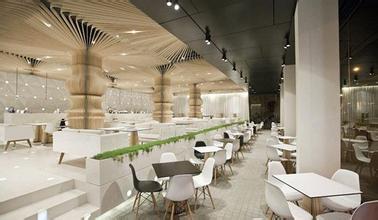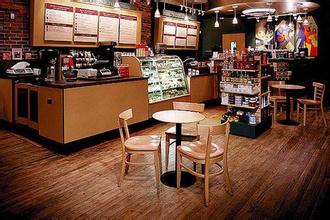The structure of coffee beans from the inside to the outside the structure diagram of the roaster describes the structure of coffee beans.
The structure of coffee beans from the inside to the outside the structure diagram of the roaster describes the structure of coffee beans.
Local aborigines often grind the fruit of the coffee tree and knead it with animal fat to make many ball-shaped balls. These indigenous tribes use these coffee balls as precious food for soldiers who are about to go out to battle. It was not until around the 11th century that people began to use boiled coffee as a drink. In the 13th century, Ethiopian troops invaded Yemen and brought coffee to the Arab world. Because the Islamic doctrine forbids people to drink alcohol, some religious people think that this kind of drink stimulates the nerves and violates the doctrine. Coffee shops were banned and closed for a time, but the Egyptian sultan thought that coffee was not against the doctrine, so the ban was lifted. Coffee drinks quickly became popular in the Arab region. The word coffee Coffee, which comes from the Arabic Qahwa, which means "plant drink", later spread to Turkey and became the source of the word in European languages. The method of growing and making coffee has also been continuously improved and perfected by the Arabs.
Kenya AA
Kenya AA (8)
The cultivation and production of coffee in the 17th century has always been monopolized by Arabs. At that time, it was mainly used in medicine and religion, and doctors and monks admitted that coffee had the effects of refreshing, awakening, strengthening the stomach, strengthening the body and stopping bleeding. The use of coffee was documented at the beginning of the 15th century and was integrated into religious ceremonies during this period. At the same time, it also appeared in the folk as a daily drink. Because drinking was strictly forbidden in Islam, coffee became a very important social drink at that time.
The main structure of coffee fruit can be seen more intuitively.
Coffee is grown with seeds with endocarp, and the raw coffee beans we usually come into contact with have their endocarp removed, so they can't be planted.
Endocarp ("sheepskin" or "paper skin") refers to the tea-brown hard skin that wraps the coffee seeds, and the coffee beans attached to that layer are called "shelled beans" ("sheepskin paper beans").
Generally speaking, there are two pairs of seeds in the fruit, but occasionally there is only one seed in the fruit, which is called Pea berry.
The coffee we usually drink is made by grinding, brewing and other steps after roasting the seeds at the center of the coffee fruit.
Coffee fruit is mainly changed into raw coffee beans by the following three treatments: dry type, water washing type and semi-washing type.

Important Notice :
前街咖啡 FrontStreet Coffee has moved to new addredd:
FrontStreet Coffee Address: 315,Donghua East Road,GuangZhou
Tel:020 38364473
- Prev

How long will the coffee beans last after roasting?-Starbucks Italian roasted coffee beans
How long can the coffee beans last after baking-Starbucks Italian roasted coffee beans one-way valve packaging: pouches and tins can be used. After cultivation, the coffee is put into a special vacuum container with an one-way valve, which allows the gas to go out but not in, and does not need to be stored separately, but because the aroma is lost a little during the outgassing process, it avoids the formation of the smell of corruption, but it can not stop the fragrance.
- Next

When using drip filter method to brew coffee beans-what kind of coffee beans should be used for ice-dripping coffee?
Using drip brewing method for coffee beans-what kind of coffee beans for ice drop coffee depends on the size of the coffee cup used to determine the amount of hot water, the average cup of coffee needs about 140~150c.c. Then fix the upper pot with the filter cloth on the base, pour in the ground coffee bean powder, and heat the water in the pot by alcohol lamp or other heat source. After the water boils, the vapor pressure forces
Related
- Guji coffee producing area of Guji, Ethiopia: Humbela, Shakiso, Wulaga
- What is the most expensive variety of Qiloso in BOP multi-variety group?
- How to store the coffee beans bought home?
- Why are Yemeni coffee beans so rare now?
- Ethiopian Sidamo all Red Fruit Sun Sun Santa Vini Coffee beans
- SOE is mostly sour? What does it mean? Is it a single bean? what's the difference between it and Italian blending?
- Is Italian coffee beans suitable for making hand-brewed coffee?
- How to choose coffee beans when making cold coffee? What kind of coffee beans are suitable for making cold coffee?
- Just entered the pit to make coffee, what kind of coffee beans should be chosen?
- Can only Japan buy real Blue Mountain Coffee? What are authentic Jamaican Blue Mountain coffee beans?

